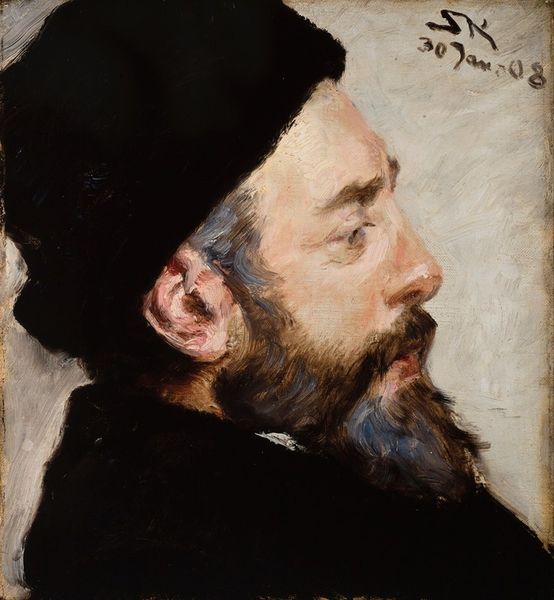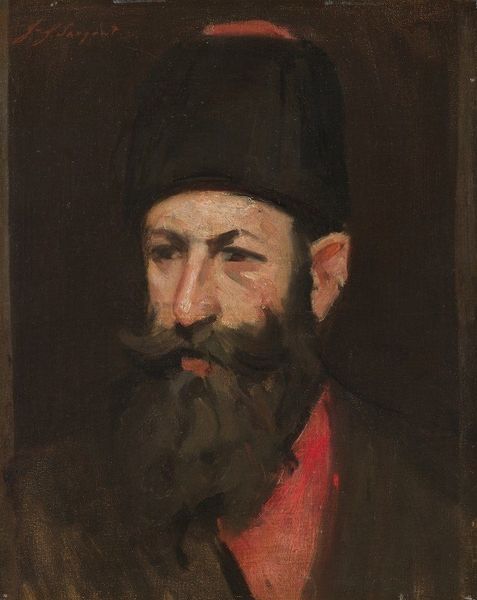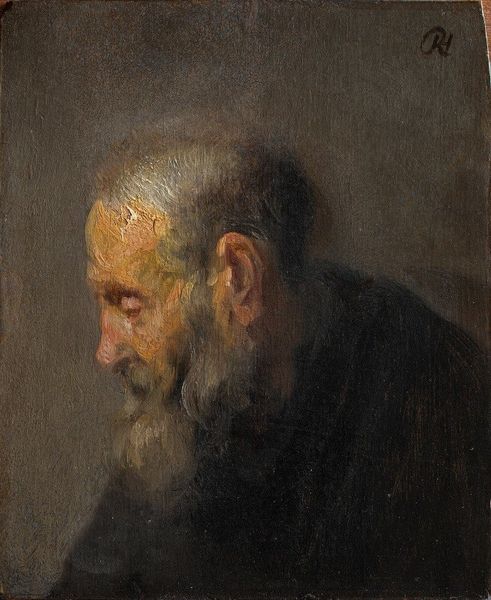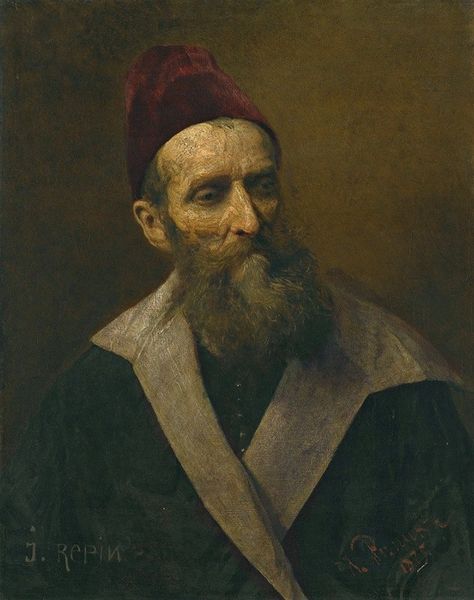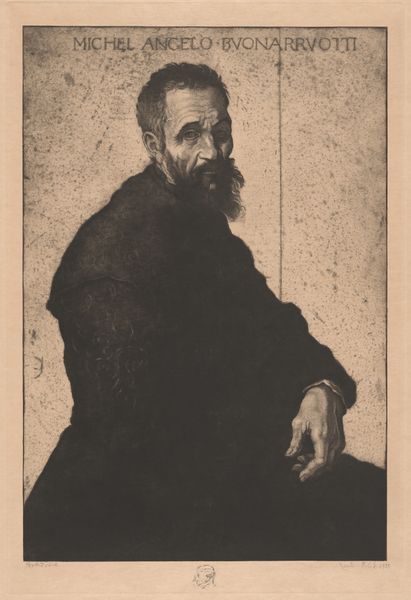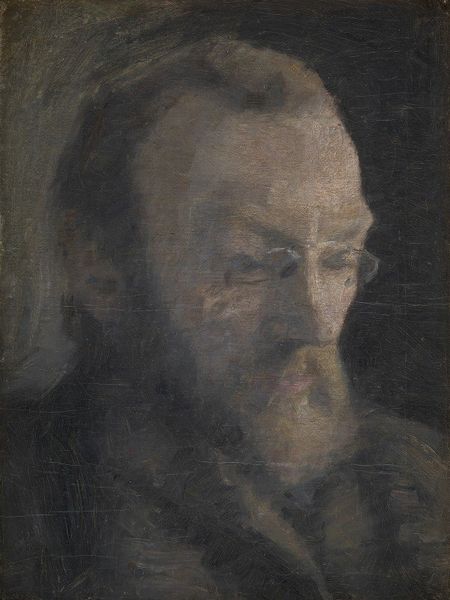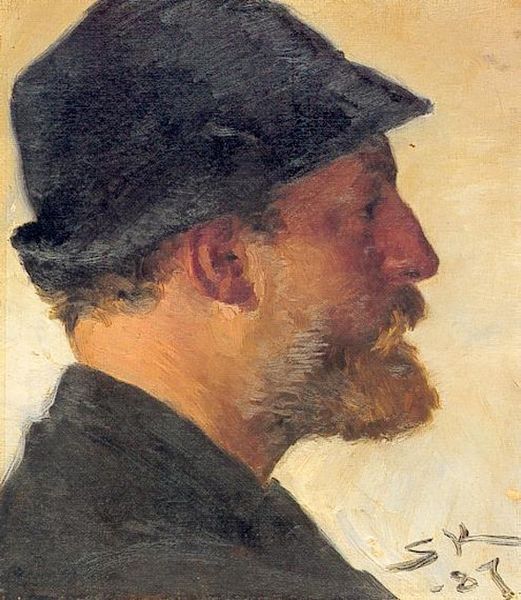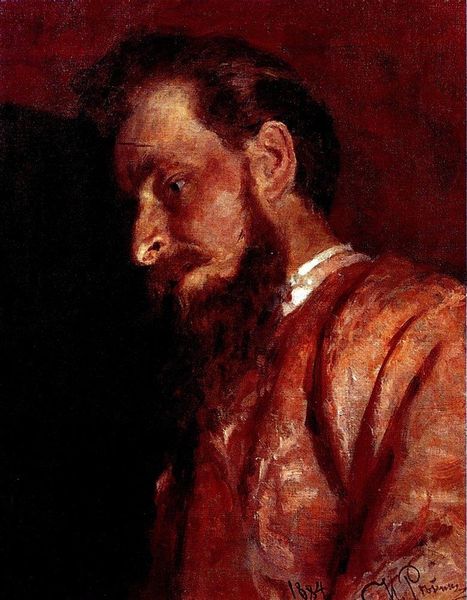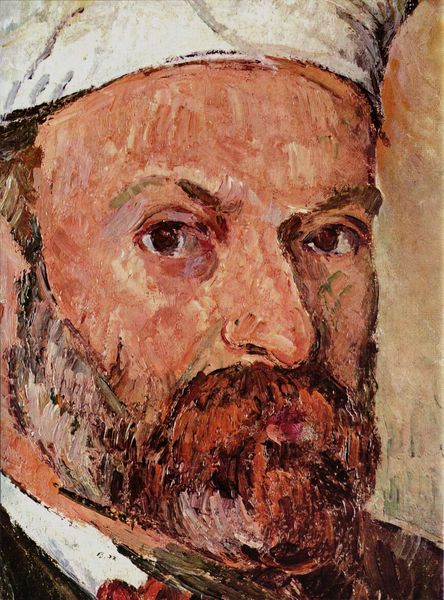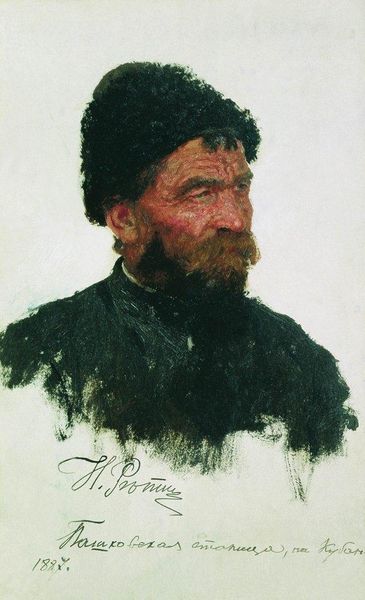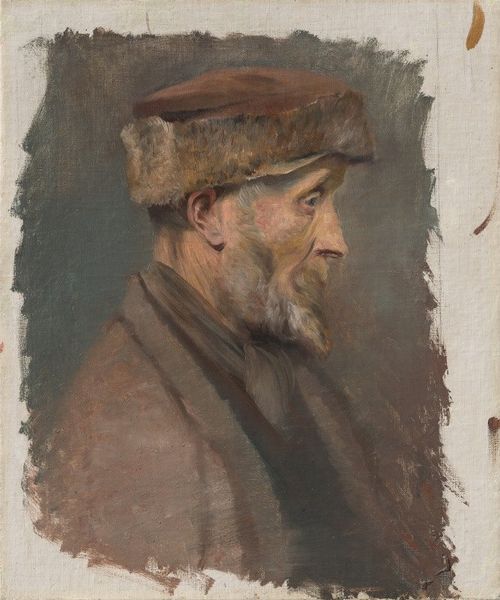
Copyright: Public domain
Odilon Redon painted this self-portrait in France, though the date is unknown. It's a work that invites us to consider the artist's place in the social and cultural landscape of his time. Redon was working during a period of rapid social and artistic change. The rise of industrialization, urbanization, and scientific rationalism challenged traditional values and beliefs. It's important to note that Redon's art often explored the realm of dreams, the subconscious, and the irrational, in opposition to the positivist culture of the 19th Century. It was a culture that was more and more defining itself through museums, galleries, and art schools. Redon, while not directly critiquing the institutions of art, was progressive in his challenge to academic conventions. He used the language of art to explore the subjective experience and to give form to the unnameable. To better understand the social context of this work, one can consult period writings on aesthetic theory, artists' biographies, exhibition reviews, and the archives of the art institutions themselves. Ultimately, the meaning of this self-portrait is contingent upon its historical and cultural context.
Comments
No comments
Be the first to comment and join the conversation on the ultimate creative platform.
